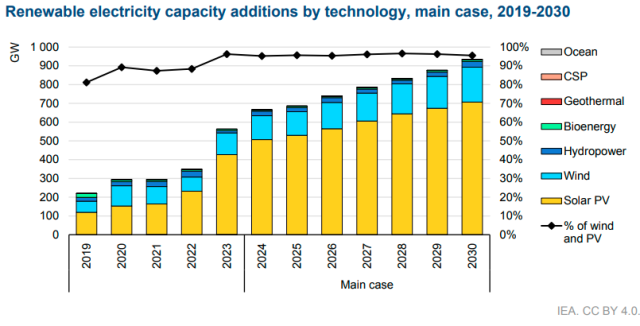The International Energy Agency (IEA) reports that the global solar PV industry is facing a significant supply glut, causing manufacturers to scale back investment plans. By the end of 2024, global solar PV manufacturing capacity is expected to exceed 1,100 GW, more than double the projected demand for PV installations.
This oversupply has led to a steep decline in solar module prices, which have more than halved since early 2023, resulting in negative net margins for integrated manufacturers. The market’s challenging conditions have triggered the cancellation of approximately 300 GW of polysilicon and 200 GW of wafer manufacturing capacity projects, representing an investment of around USD 25 billion.
Smaller manufacturers are particularly vulnerable, with an estimated 17 percent of global polysilicon and 10 percent of wafer manufacturing capacity at risk due to outdated production methods. Despite these challenges, supply chain capacity is still expected to surpass installation rates by 2030, which could further intensify market strain.
China remains the dominant force in solar PV manufacturing, holding over 80 percent of the global capacity across all segments, a position it is expected to maintain through 2030.
Meanwhile, manufacturing capacities in the U.S. and India are projected to nearly triple by then, though production costs in these regions are significantly higher than in China, ranging two to three times as much. Policymakers in these countries must weigh the benefits of local production, such as job creation and energy security, against these elevated costs.
Looking ahead to 2030, renewable energy will account for 46 percent of global electricity generation, with solar PV expected to become the leading renewable source, followed by wind power. In 2023, utility-scale solar PV installations nearly doubled globally, with China leading the surge as module prices plummeted and large-scale projects were fast-tracked. The U.S. followed, nearly doubling its own utility PV installations.
Despite a robust increase in global solar and wind capacity, China’s rapid growth has led to grid integration challenges, including a rise in curtailment rates for variable renewable energy.
China’s distribution grid is also facing constraints due to the rapid expansion of distributed solar PV capacity, which more than doubled from 2021 to 2023. China’s solar PV additions in the first eight months of 2024 were nearly 30 percent higher than the same period in 2023, demonstrating the ongoing strength of its renewable energy expansion.
IEA says global annual renewable capacity additions rise from 666 GW in 2024 to almost 935 GW in 2030. Solar PV and wind are forecast to account for 95 percent of renewable capacity additions through 2030 because their generation costs are lower than for both fossil and non-fossil alternatives in most countries, and policies continue to support them.
In 2024, renewable energy capacity is projected to expand by 20 percent for solar PV, 10 percent for wind, and over 85 percent for hydropower, with China’s market developments playing a key role in shaping the growth.
Baburajan Kizhakedath

